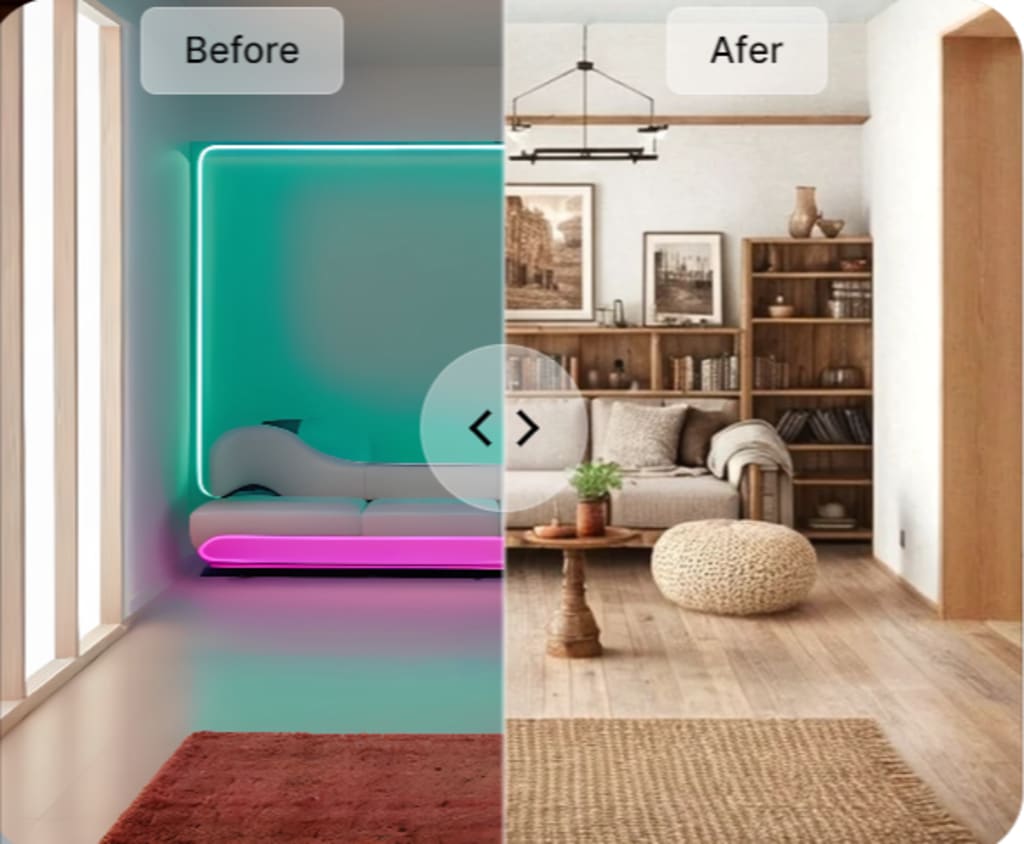How AI is Revolutionizing Interior Design in Architecture
How AI is Sparking Creativity in Interior Design

Remember the days when architects relied solely on blueprints and imagination to design interiors? While those skills remain essential, the world of interior design is undergoing a revolution with the help of Artificial Intelligence (AI).
Imagine struggling to translate a client's dream home into a reality – the frustration of juggling their desires with functionality and space limitations. This is where AI steps in, offering a powerful new tool for architects and interior designers.
The Traditional Approach: Blueprints and Beyond
Traditionally, interior design within the architectural process involved a lot of back-and-forth communication. Architects would translate client needs into initial sketches and layouts. Clients would provide feedback, leading to revisions and adjustments. This iterative process, while crucial, can be time-consuming and limit creative exploration.
The Challenges of Traditional Interior Design
Several challenges plagued the traditional approach:
- Bridging the Gap Between Vision and Reality: Accurately translating a client's sometimes vague vision into a concrete design plan can be difficult.
- Time Constraints and Missed Opportunities: Tight deadlines can restrict the exploration of various design possibilities.
- Limited Data for Optimal Design: Without readily available data on space optimization and functionality, achieving the perfect balance can be challenging.
Enter the AI Revolution: A New Era for Interior Design
AI is transforming the way interior design is approached in architecture. It's not about replacing human creativity, but rather enhancing it by offering powerful tools and functionalities. Here's how AI tackles the challenges mentioned earlier:
- Optimizing Space Like Never Before: AI can analyze architectural plans and existing space dimensions. It can then suggest optimal layouts for furniture placement, traffic flow, and functionality. This ensures the most efficient use of space without compromising comfort.
- Personalization Made Easy: Gone are the days of one-size-fits-all designs. AI can personalize interior design by considering factors like user habits, ergonomics, and accessibility needs. Designing for a multi-generational household? AI can suggest layouts that cater to everyone's comfort and safety.
Key Applications of AI in Action
Let's delve deeper into how AI is changing the game in several key areas of interior design:
- Space Optimization for Functionality: Imagine uploading architectural plans or existing room dimensions into an AI tool. The AI can analyze the data and suggest layouts for furniture placement that maximize space utilization and ensure smooth traffic flow. This is particularly helpful for smaller spaces or rooms with unusual configurations.
- Personalized Design: Ever wished you could design a home that perfectly reflects your lifestyle? AI can personalize your interior design by considering user habits. Do you work from home? AI can suggest dedicated workspaces with optimal lighting and ergonomic furniture placement. Do you love to entertain? The AI can design an open floor plan that facilitates socializing.
AI and a Sustainable Future for Design
The benefits of AI in interior design extend beyond functionality and aesthetics. AI can be a powerful tool for promoting sustainable design practices:
- Optimizing Energy Efficiency: AI can analyze factors like window placement, natural light availability, and insulation materials to suggest designs that minimize energy consumption.
The Human Touch: Architects in the AI Era
While AI offers incredible capabilities, it's important to remember that it's a tool to augment human creativity, not replace it. Architects will continue to play a crucial role in the design process:
- Ensuring Aesthetic Cohesion: AI offers a vast array of design possibilities, but achieving a cohesive and aesthetically pleasing final design requires human expertise.
- The Power of Emotion: Great interior design goes beyond functionality. Architects bring the human touch and emotional intelligence to create spaces that inspire, uplift, and reflect the personalities of those who inhabit them.
AI and the Future of Interior Design
The future of AI in interior design is brimming with exciting possibilities. Here are a few advancements to keep an eye on:
- VR Integration for Immersive Design Experiences: Imagine putting on a VR headset and virtually walking through your dream home before it's even built. AI-powered design tools are integrating with VR technology to create immersive experiences that allow architects and clients to refine designs in real-time.
- AI-Powered Material Selection and Procurement: Sustainable design becomes even easier with AI. Advanced AI tools can analyze vast material databases, considering factors like cost, durability, environmental impact, and local availability. They can then suggest the most suitable materials and even streamline the procurement process.
- Hyper-Personalization with AI: As AI technology continues to evolve, we can expect even greater levels of personalization in interior design. Imagine AI systems that learn from user data and preferences, suggesting design elements that cater to individual lifestyles and habits.
The Potential Impact of AI
The integration of AI into interior design has the potential to revolutionize the entire field. Here are some exciting possibilities:
- Increased Efficiency and Productivity: AI can automate repetitive tasks such as space planning and furniture layout, freeing up architects and designers to focus on the creative aspects of the process. This can lead to faster project turnaround times and increased efficiency.
- Enhanced Client Satisfaction: By allowing for greater exploration of design options, improved space utilization, and personalized elements, AI can lead to a higher level of client satisfaction.
Collaborative Future
AI and the Future of Interior Design
The future of AI in interior design is brimming with exciting possibilities. Here are a few advancements to keep an eye on:
- VR Integration for Immersive Design Experiences: Imagine putting on a VR headset and virtually walking through your dream home before it's even built. AI-powered design tools are integrating with VR technology to create immersive experiences that allow architects and clients to refine designs in real-time.
- AI-Powered Material Selection and Procurement: Sustainable design becomes even easier with AI. Advanced AI tools can analyze vast material databases, considering factors like cost, durability, environmental impact, and local availability. They can then suggest the most suitable materials and even streamline the procurement process.
- Hyper-Personalization with AI: As AI technology continues to evolve, we can expect even greater levels of personalization in interior design. Imagine AI systems that learn from user data and preferences, suggesting design elements that cater to individual lifestyles and habits.
The Potential Impact of AI
The integration of AI into interior design has the potential to revolutionize the entire field. Here are some exciting possibilities:
- Democratization of Design: AI tools, often referred to as AI interior designers, can make high-quality interior design more accessible and affordable. With user-friendly interfaces and readily available online platforms, even those without extensive design experience can create beautiful and functional spaces.
- Increased Efficiency and Productivity: AI can automate repetitive tasks such as space planning and furniture layout, freeing up architects and designers to focus on the creative aspects of the process. This can lead to faster project turnaround times and increased efficiency.
- Enhanced Client Satisfaction: By allowing for greater exploration of design options, improved space utilization, and personalized elements, AI interior designers can lead to a higher level of client satisfaction.
Conclusion: A Collaborative Future
The future of interior design is a story of human and machine collaboration. AI offers a powerful toolset for architects and designers, allowing them to explore new creative possibilities, optimize space utilization, and personalize designs like never before. While AI can handle the heavy lifting of data analysis and initial concept generation, the human touch remains irreplaceable. Architects will continue to guide the design process, ensure aesthetic cohesion, and bring the emotional intelligence that creates truly inspiring spaces. This exciting fusion of human creativity and artificial intelligence promises to revolutionize the way we design and experience the built environment. As AI interior designers continue to evolve, we can expect even more innovative and personalized approaches to shaping the interiors of our future.
About the Creator
Mahbub Murshed
Content Creator
Enjoyed the story? Support the Creator.
Subscribe for free to receive all their stories in your feed. You could also pledge your support or give them a one-off tip, letting them know you appreciate their work.






Comments
There are no comments for this story
Be the first to respond and start the conversation.